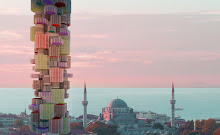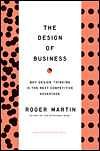What is your brand?
You are nothing without a brand.
 Brand names were once only identified with companies like Coca Cola, McDonalds, Sony, Mecedes-Benz. Celebrities have long lent their names and appeal to promote and market consumer products. Oprah Winfrey and Martha Stewart have been able to turn themselves into brands worth billions of dollars. In an age where competition is so aggressive and time and attention spans so limited, branding has become a highly coveted strategy and perhaps necessary. From art to politics to war to museums to cities to countries to architecture and of course business - all these varied entities have all developed brands to self-promote and compete in the global marketplace.
Brand names were once only identified with companies like Coca Cola, McDonalds, Sony, Mecedes-Benz. Celebrities have long lent their names and appeal to promote and market consumer products. Oprah Winfrey and Martha Stewart have been able to turn themselves into brands worth billions of dollars. In an age where competition is so aggressive and time and attention spans so limited, branding has become a highly coveted strategy and perhaps necessary. From art to politics to war to museums to cities to countries to architecture and of course business - all these varied entities have all developed brands to self-promote and compete in the global marketplace.
But what is a brand? According to Wikipedia, it is the following:
"Brands were originally developed to be labels of ownership: name, term, design, symbol. However, today it is what they do for people that matters much more, how they reflect and engage, how they define their aspirations and enable them to do more. Powerful brands can drive success in competitive and financial markets and indeed become the organization's most valuable asset."
But Dubai is not alone in seeking new strategies and methods to brand itself. Countries such as Romania, Egypt, New Zealand, Rwanda, Ireland, Turkey, Ireland and Finland have all engaged branding firms; as have cities like New York, Bilbao, Hong Kong and the city-state of Singapore. Nations are branding all their hard and soft power to create flashy identities to attracts tourists, businesses and the creative and wealthy global elite.
In an effort to become highly recognizable and competitive, many businesses, foundations and governments around the world are also paying top dollar to attract the brand name architect to build his/her signature building to garner even more attention and to get that critical stamp of global approv
 al. Bilbao's collection of buildings by brand name architects revived the city from near oblivion.
al. Bilbao's collection of buildings by brand name architects revived the city from near oblivion.Just as architects like Frank Gehry, Zaha Hadid, Tadao Ando, Richard Meier (to name a few) have now become a brand, so now has art and their artists. Salvador Dali touched fashion, movies, paintings and sculpture; as did Andy Warhol. More recently Takashi Murakami's flirtation with fashion proved very profitable for Louis Vuitton. His redesign of their signature logo was a tremendous hit. Murakami has perhaps epitomized the conscious effort of turning art and artist into a commercial brand by incorporating his name and his work.
Museums around the world are also jumping on the branding bandwagon. The Solomon R. Guggenheim Foundation has turned its Guggenheim name into a brand of museums that can be visited in New York, Bilbao, Venice, Berlin
 and Las Vegas. More recently and perhaps more surprisingly was the French government's agreement with Abu Dhabi to loan the Louvre brand and its art to Abu Dhabi for the next twenty years for the rumored sum of US$1 billion.
and Las Vegas. More recently and perhaps more surprisingly was the French government's agreement with Abu Dhabi to loan the Louvre brand and its art to Abu Dhabi for the next twenty years for the rumored sum of US$1 billion. Model of Abu Dhabi Louvre
Model of Abu Dhabi LouvreCourtesy of George W. Bush, we also have the War on Terror - the brand that encompasses and promotes an indefinite number of wars, and a whole host of shady activities that suspend human rights and civil liberties in the U.S.
In article for Artillery Magazine, Gordy Grundy writes that "branding is evolving from a simple product distinction to a sociological mirror of our culture.... It is a relatively new concept that is continually evolving with depth and intention." He anticipates that the brand will continue to evolve to include lifestyle, spirituality and sociology. And that is only the beginning.
Welcome to the Age of Branding.






























very true. good post. Russia also just engaged in some major image shaping activity. I've been thinking that having a blog is like having a brand, forces a public "face" and sites like facebook and myspace work along those lines as well - to have a presence online, you have to define yourself, show something, by default you have some kind of style. how important *should* image be? Is brand more than image? how much more?
ReplyDelete